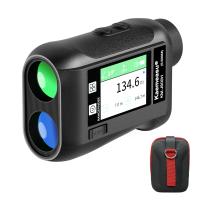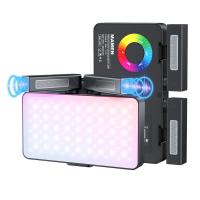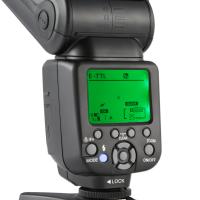What Colour Is Speed Camera Flash?
When it comes to speed cameras, understanding the color of the flash is often a point of curiosity, especially for drivers hoping to avoid being caught for speeding. The flash emitted by speed cameras varies in color depending on the type of camera and the region. However, in most cases, the flash from speed cameras is either white, yellow, or red, with each serving different purposes depending on the camera technology in use and its intended function.
1. White Flash
The most common flash color you will encounter on modern speed cameras is white. This flash is typically associated with digital speed cameras and is used to capture the vehicle's image, ensuring the camera can read the license plate even in low light or nighttime conditions.
Why White?

White light flash is effective because it provides high-intensity illumination without significantly altering the appearance of the vehicle or its surroundings. The flash is bright enough to produce clear images, making it easier for authorities to identify speeding vehicles at night or in dark conditions. This type of flash is also relatively discreet in terms of visibility, as it’s not as noticeable as more colorful flashes, thus preventing drivers from reacting to it too quickly.
2. Yellow or Amber Flash
In some locations, particularly in older or more traditional systems, speed cameras may use a yellow or amber flash. This flash color is often associated with traditional film-based cameras or early-generation digital cameras. The yellow flash tends to be slightly less intense than the white flash, but it still provides enough lighting for the camera’s sensors to capture a clear image of the vehicle and its license plate.
Why Yellow or Amber?

Yellow and amber flashes are often used because they stand out against typical street lighting, providing good visibility in both day and night conditions. The amber tone is also less harsh to the eyes, making it a preferred option in some regions to reduce light pollution and minimize the effect of glare on other road users.
3. Red Flash
A less common but notable flash color is red, which is sometimes used by certain types of speed cameras, especially those designed for specific purposes, such as red-light cameras or combined red-light and speed cameras. The red flash is typically used in conjunction with other forms of detection or alerting systems, like sensors embedded in the road, to catch both traffic light violations and speeding violations.
Why Red?

The red flash is designed to be particularly visible and attention-grabbing. In the case of combined systems, red might also be used to differentiate violations, signaling a particular type of infringement, such as running a red light or exceeding speed limits. The red color helps authorities to differentiate between various forms of infractions, especially in complex intersection environments where both speeding and running red lights can occur simultaneously.
4. Infrared Flash (Invisible Flash)
While not visible to the naked eye, some modern speed cameras use infrared (IR) flash technology. These cameras emit an infrared light that allows the camera to capture clear images in complete darkness. The IR flash is invisible to the human eye, meaning drivers will not see any flash at all, but the camera still captures high-resolution images of the vehicle.
Why Infrared?

Infrared technology is particularly useful for stealth enforcement, as it allows speed cameras to function without drawing attention. In areas where the goal is to deter speeding without alerting drivers, IR flashes are ideal because they don’t interfere with nighttime driving or light pollution. Additionally, this type of flash ensures that the camera can still operate at night or in low-light conditions while remaining invisible to drivers.
5. Flashing Frequency and Camera Positioning
Beyond the color of the flash, there are also important considerations about the frequency of the flash and the positioning of the camera. Some speed cameras use a rapid flash to ensure that the image of a speeding vehicle is captured even if the vehicle is moving quickly. This flash, though sometimes perceived as a bright white or yellow light, is aimed at ensuring clarity in the image, even if the car is traveling at a high speed.
Additionally, cameras placed at specific angles, such as overhead or roadside cameras, may emit different types of flashes based on the camera’s function. Overhead cameras, for example, often use a more intense white flash to ensure the camera captures the vehicle from multiple angles, making it easier to identify offenders. In contrast, cameras placed alongside the road may use a softer yellow or amber flash to avoid causing excessive distraction to other drivers.
6. Differences by Region
The color of the speed camera flash can also vary by region and country. Different jurisdictions may use different technologies and standards for speed enforcement. For instance:
- In the United Kingdom, most speed cameras use white flashes, although some older models might still employ yellow flashes.
- In the United States, red-light cameras often use a red flash, while speed cameras can vary in their use of white or yellow flashes.
- In Australia, speed cameras tend to use white flashes for digital cameras, but some regions may also use yellow or infrared flashes.
7. Practical Tips for Drivers
While it may seem like speed camera flashes are unpredictable, there are a few things drivers can do to stay aware and avoid potential fines:
- Know the Camera Locations: Speed camera locations are often marked in advance or publicly listed by local authorities. By familiarizing yourself with these locations, you can anticipate where you might encounter a flash and adjust your speed accordingly.
- Maintain Legal Speeds: The best way to avoid being caught by a speed camera is to simply obey speed limits. If you are within the speed limit, the flash from a camera is unlikely to affect you at all.
- Be Cautious at Night: In low-light conditions, when you’re most likely to encounter speed cameras using flashes, ensure your headlights are in good working condition and that you’re not speeding. The flash might be an important indicator that you’ve been caught, but it won’t help you if you’re already over the speed limit.
- Understand Local Rules: Speeding laws and enforcement can vary significantly from one region to another, even within the same country. Some places have strict zero-tolerance policies, while others may allow a certain margin of error before issuing fines.
Speed camera flashes, whether white, yellow, red, or infrared, serve one key purpose: to capture clear images of speeding vehicles and deter traffic violations. The choice of flash color depends on the technology used by the camera, the region in which it is deployed, and the specific function of the camera. White flashes are the most common, especially for digital cameras, but other colors like yellow, red, and infrared are used depending on the needs of the enforcement system.
For drivers, understanding the color and purpose of these flashes is helpful in staying within the law. However, the most effective strategy is always to drive safely and adhere to speed limits, ensuring that no matter what color flash a camera uses, you’re never caught speeding in the first place.










































There are no comments for this blog.